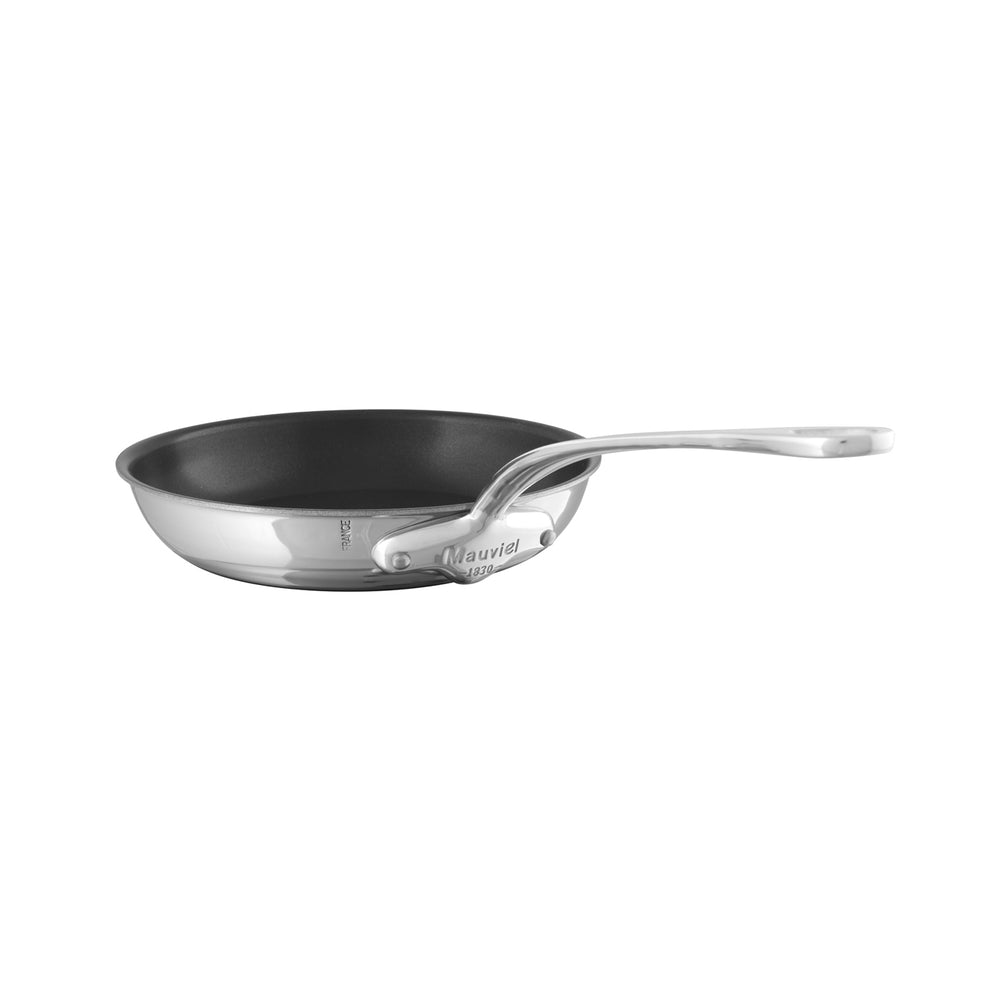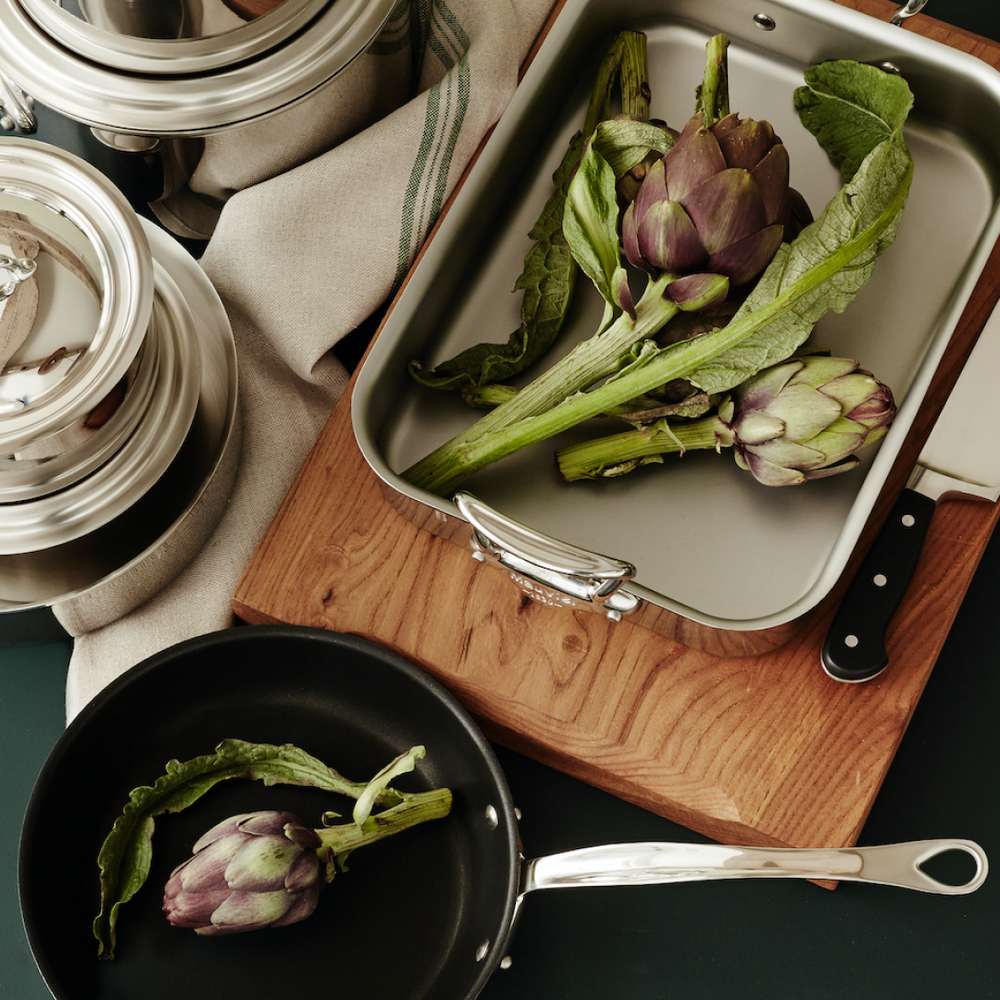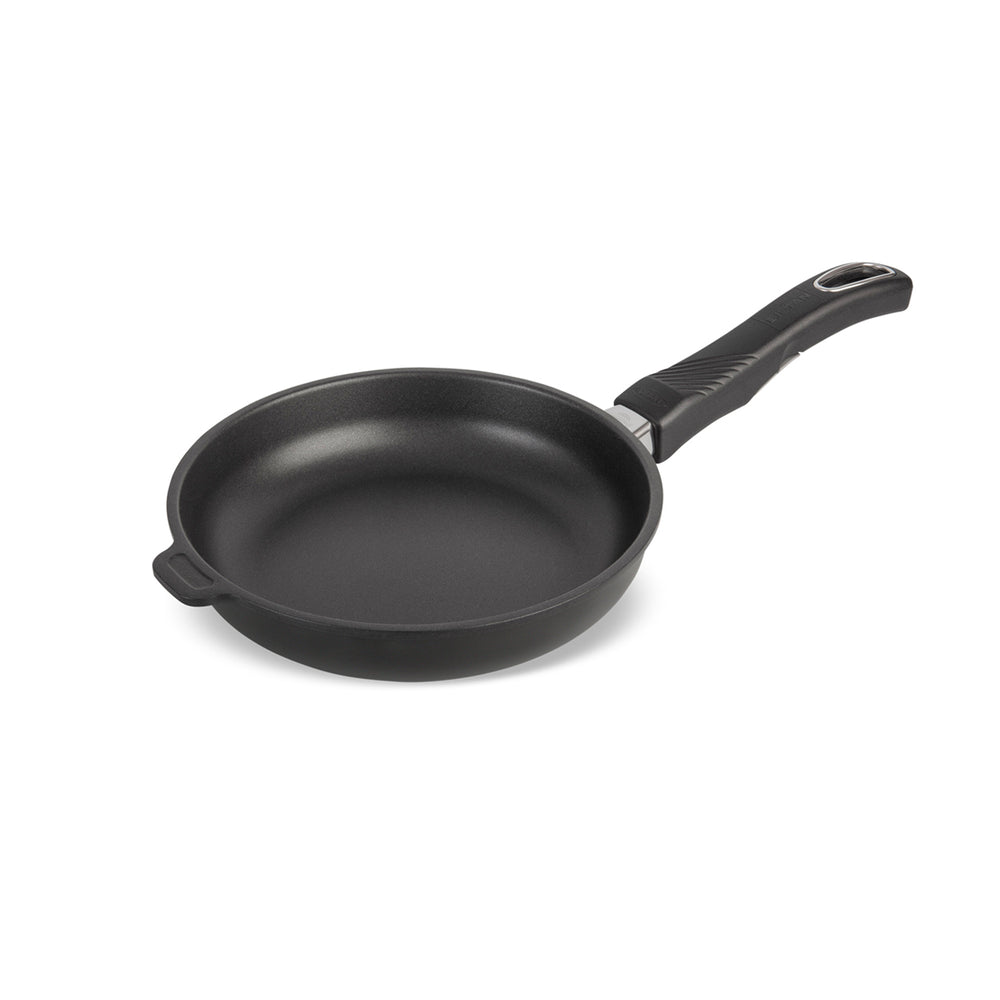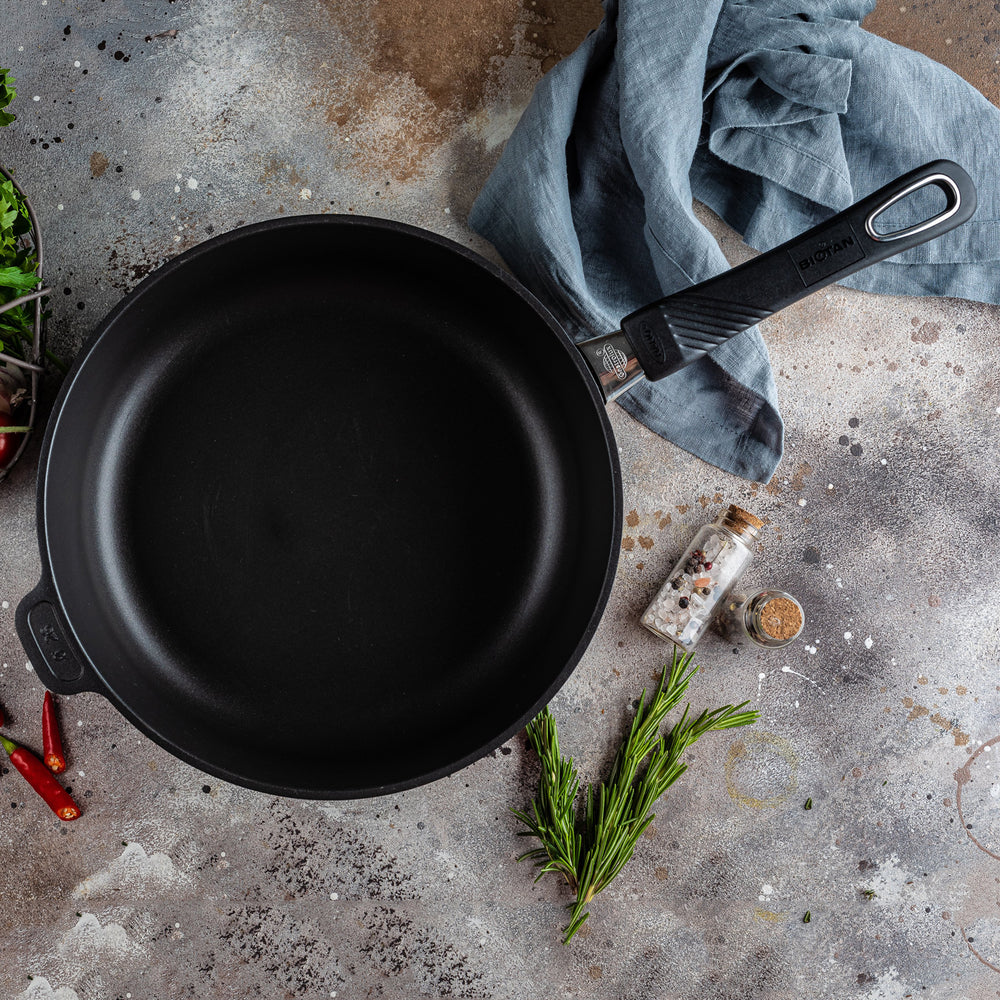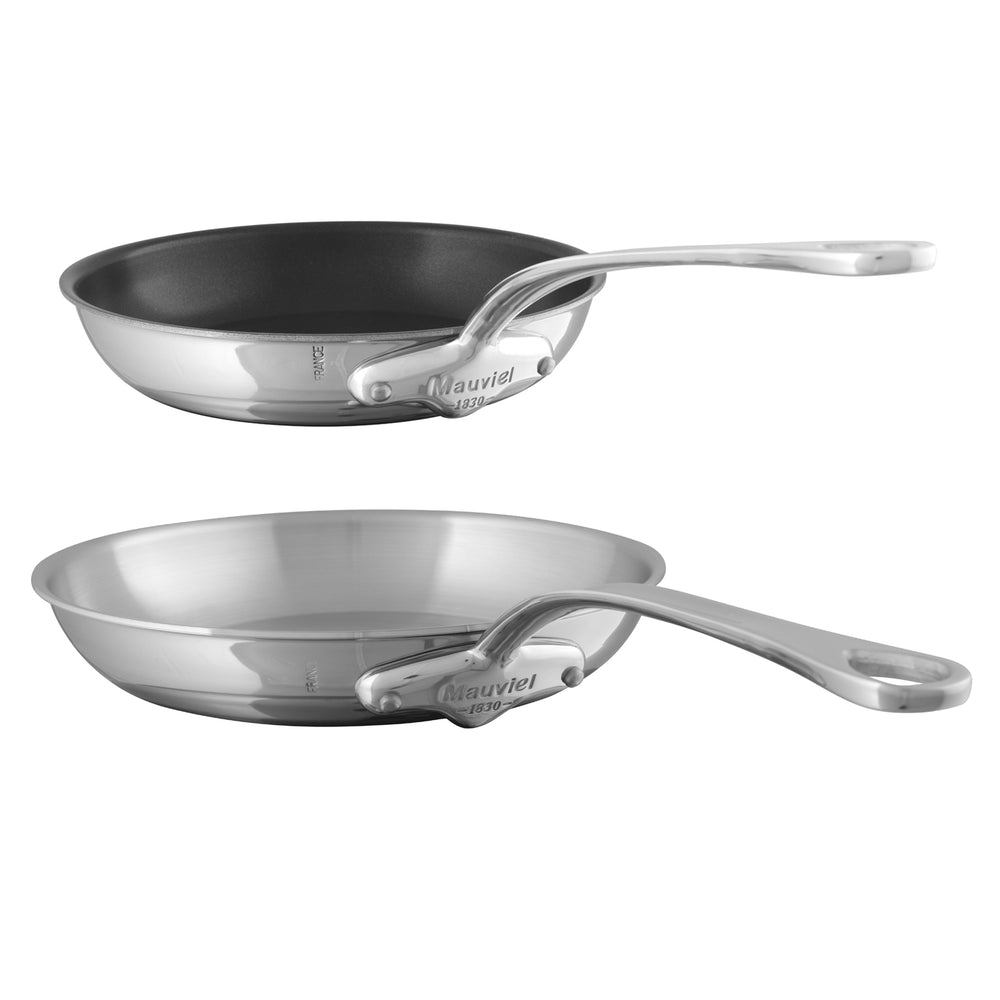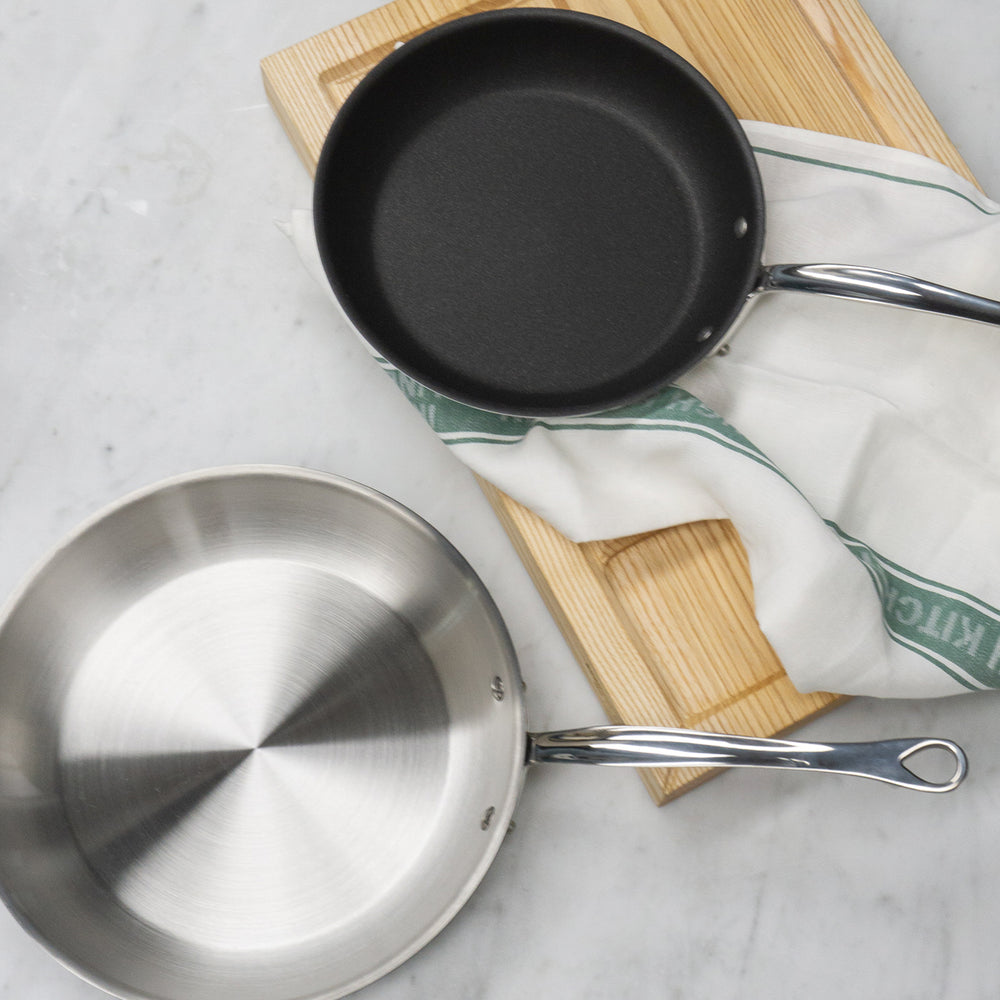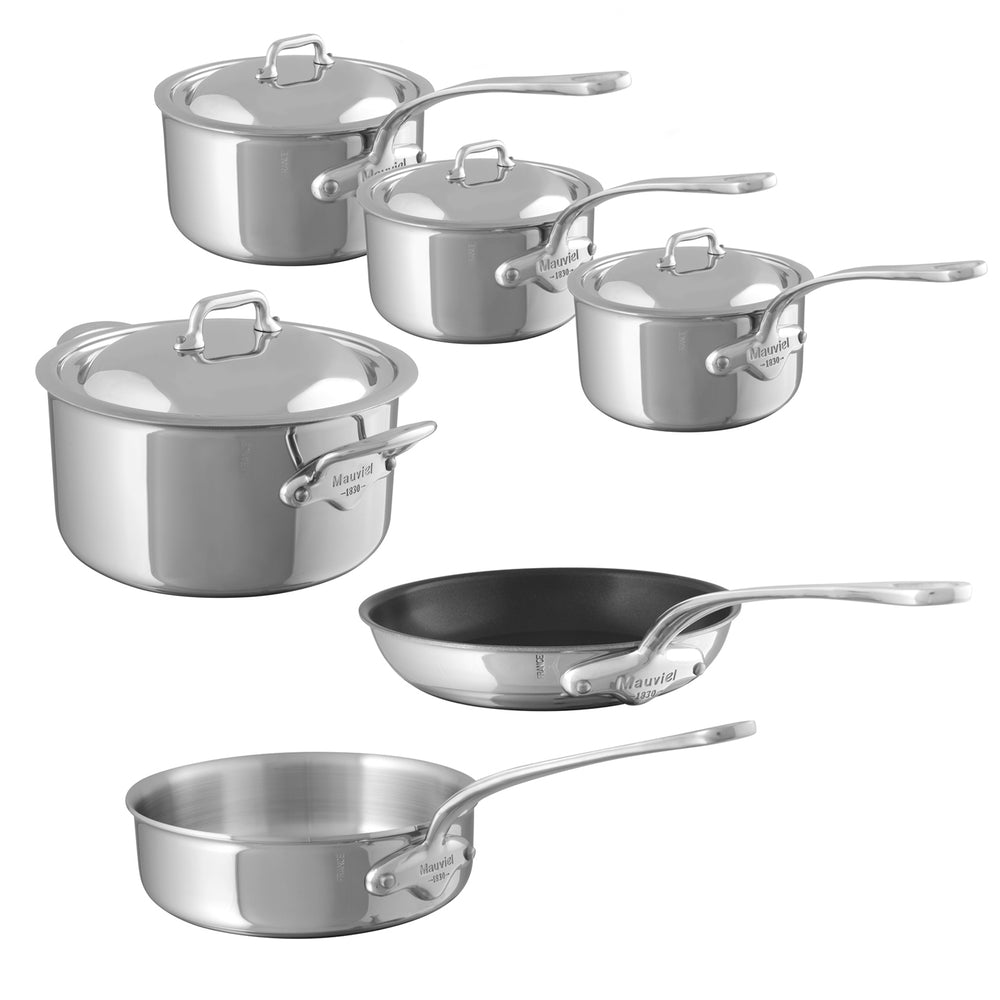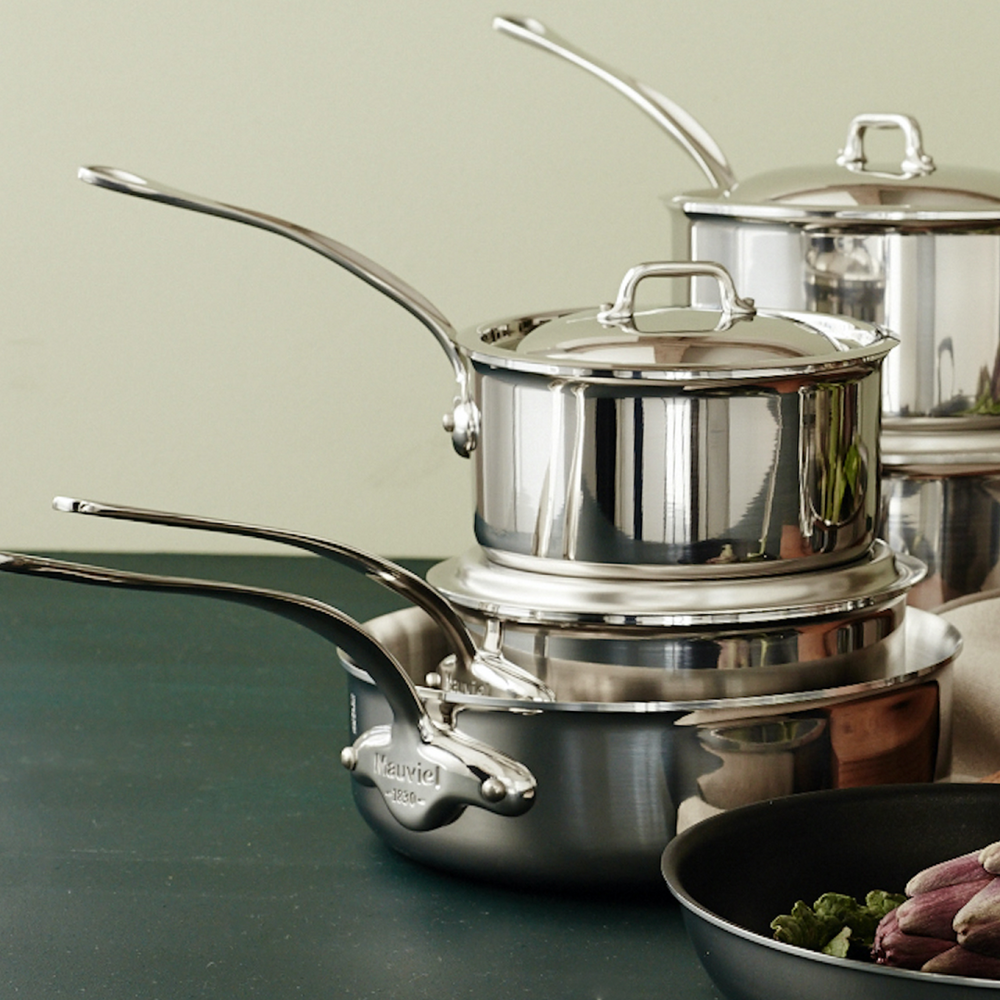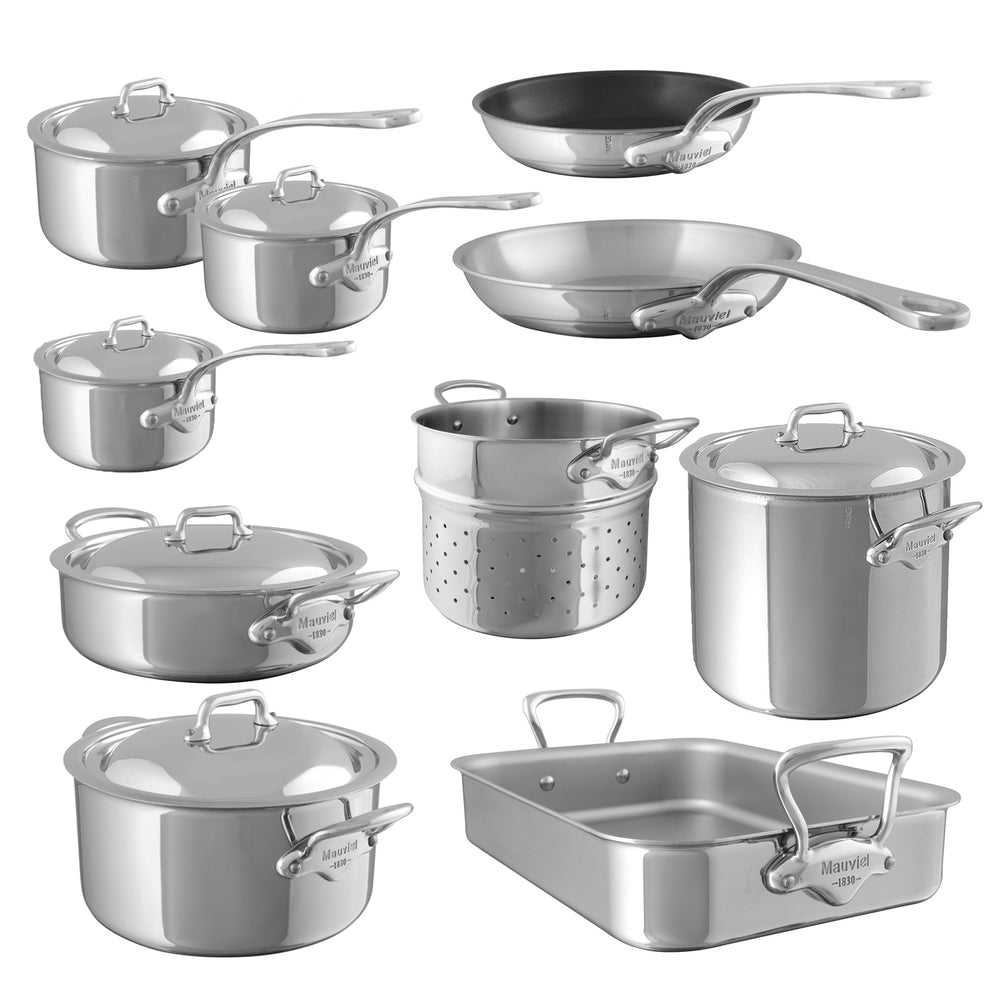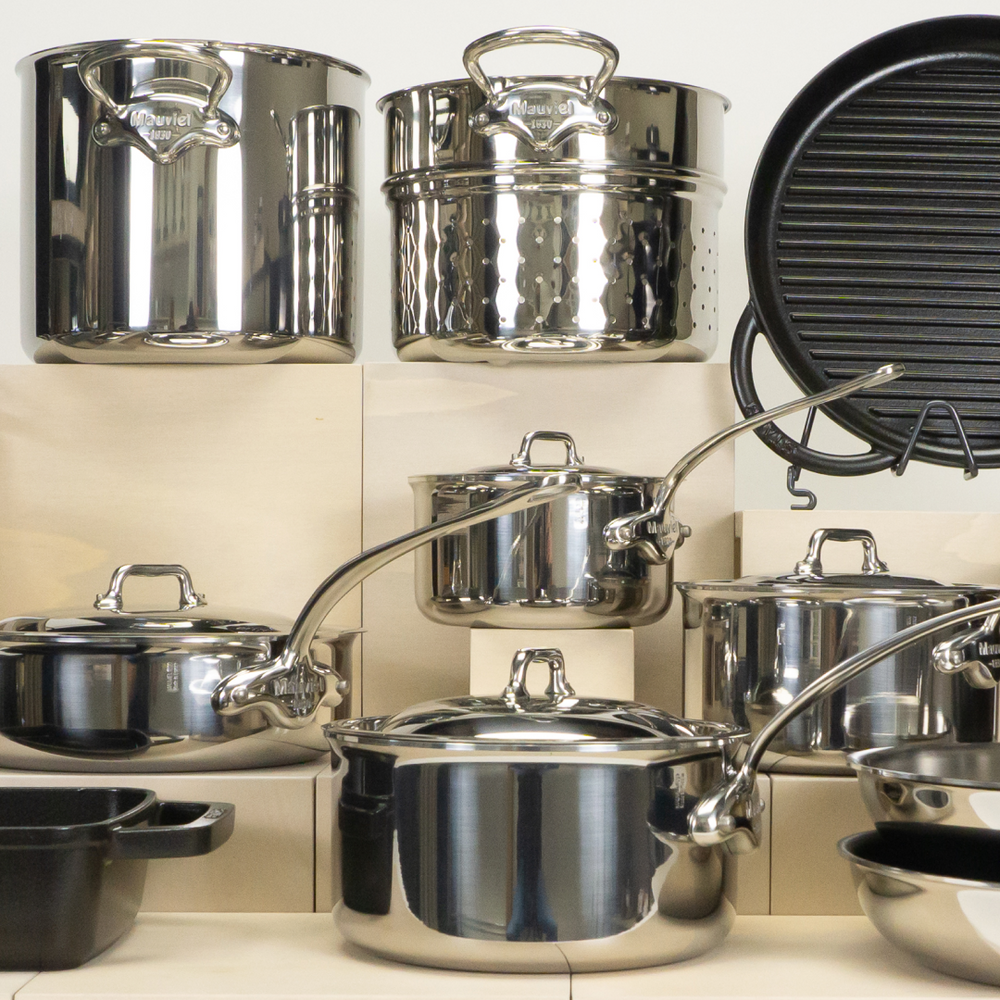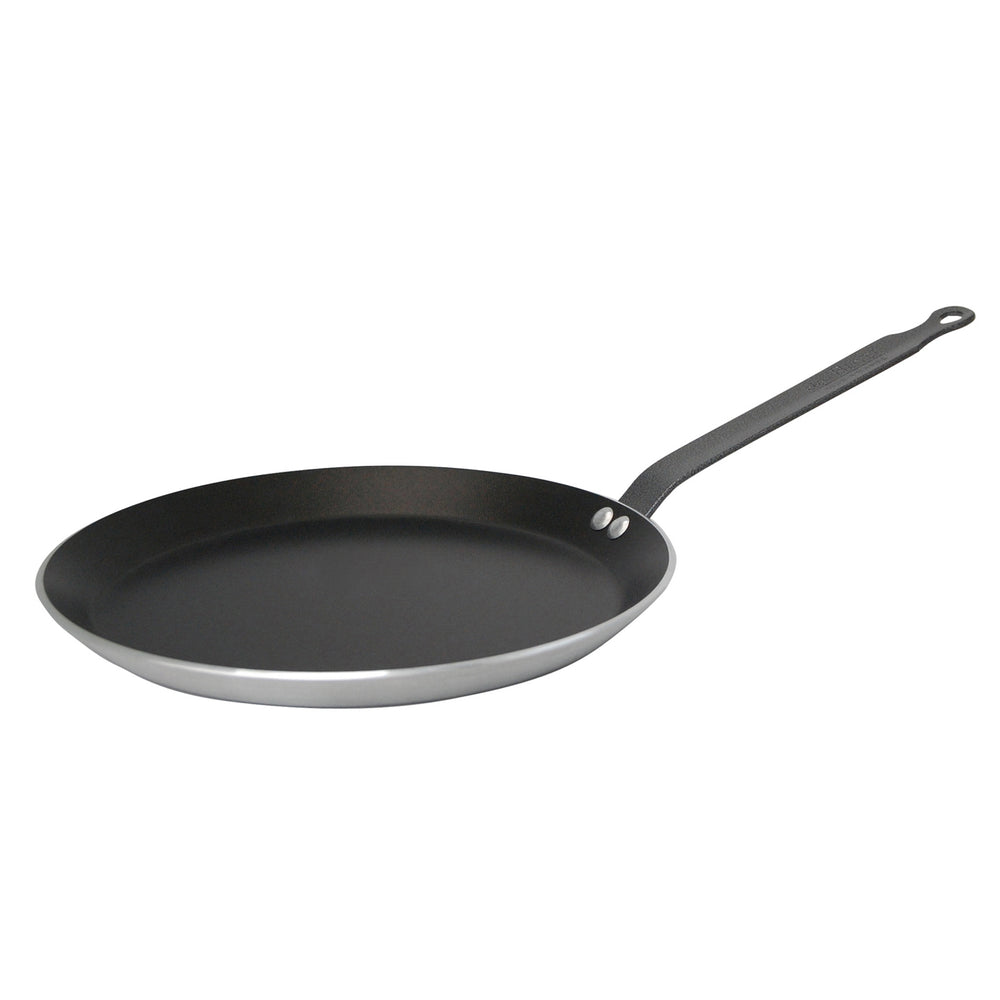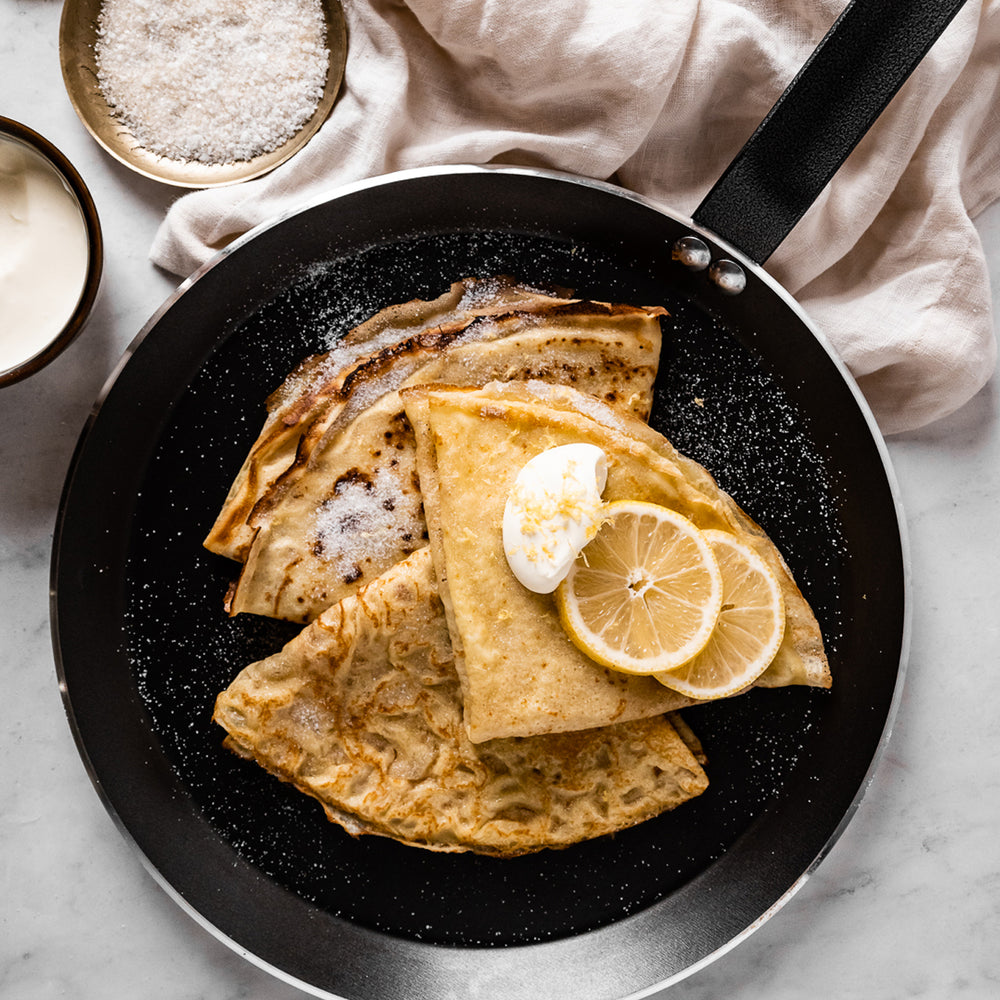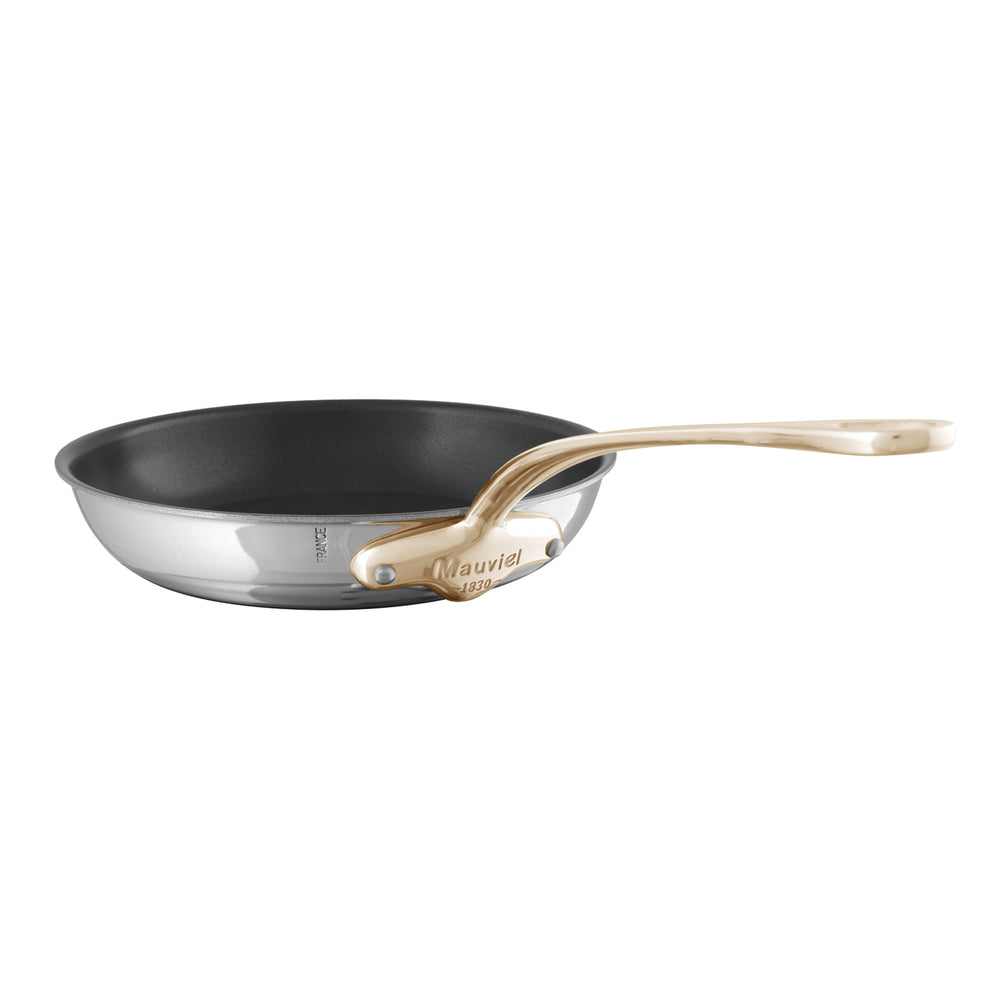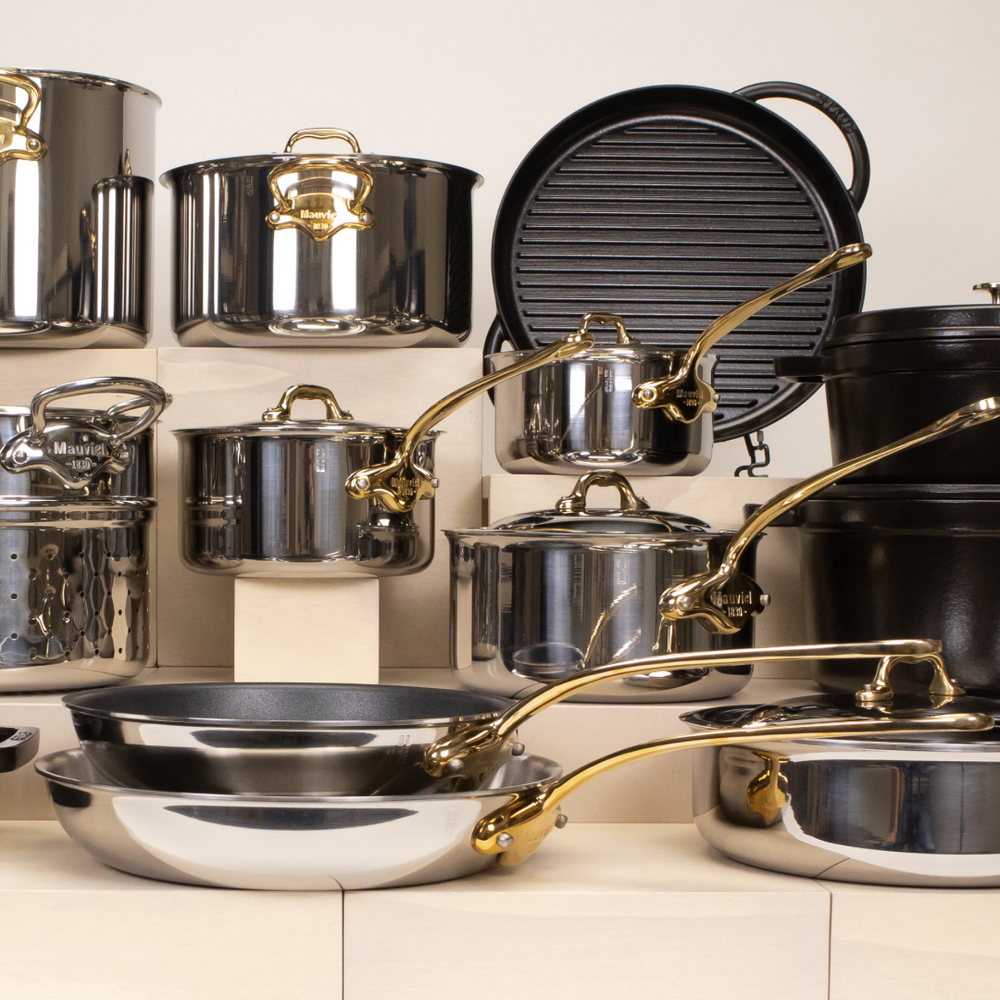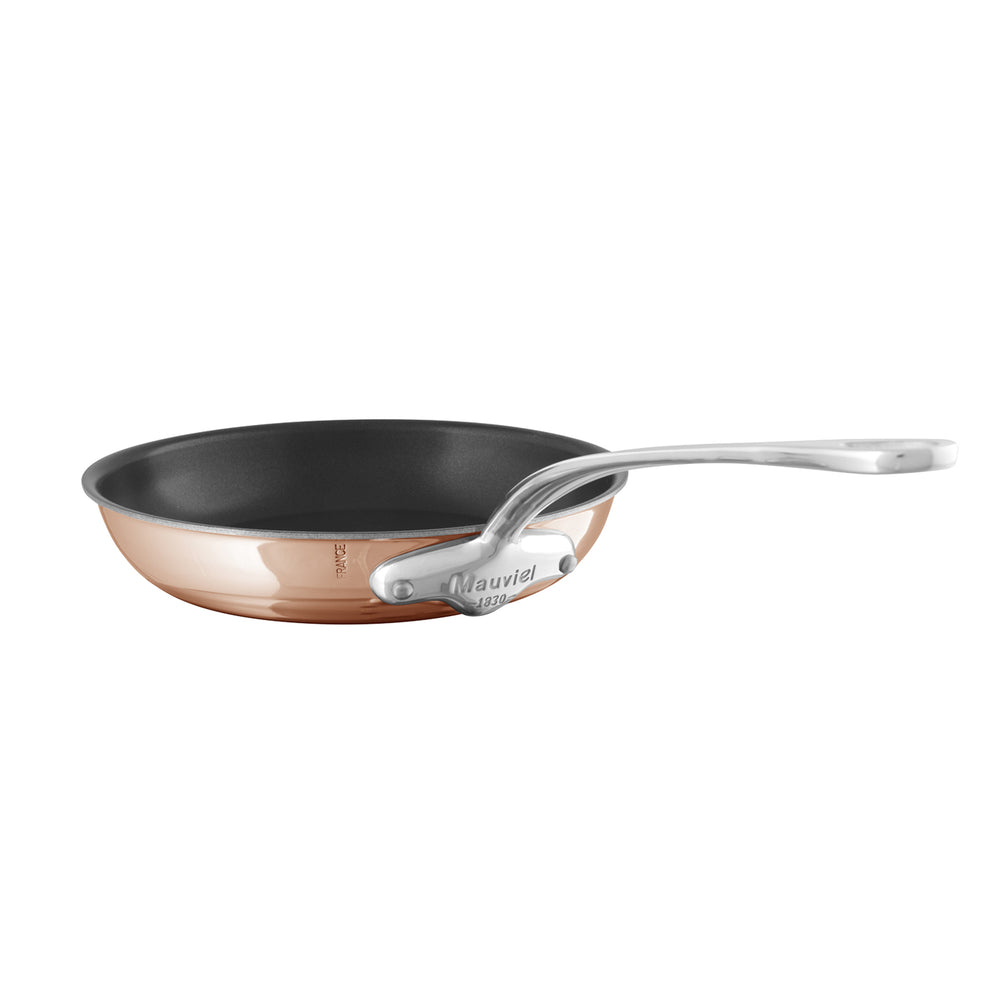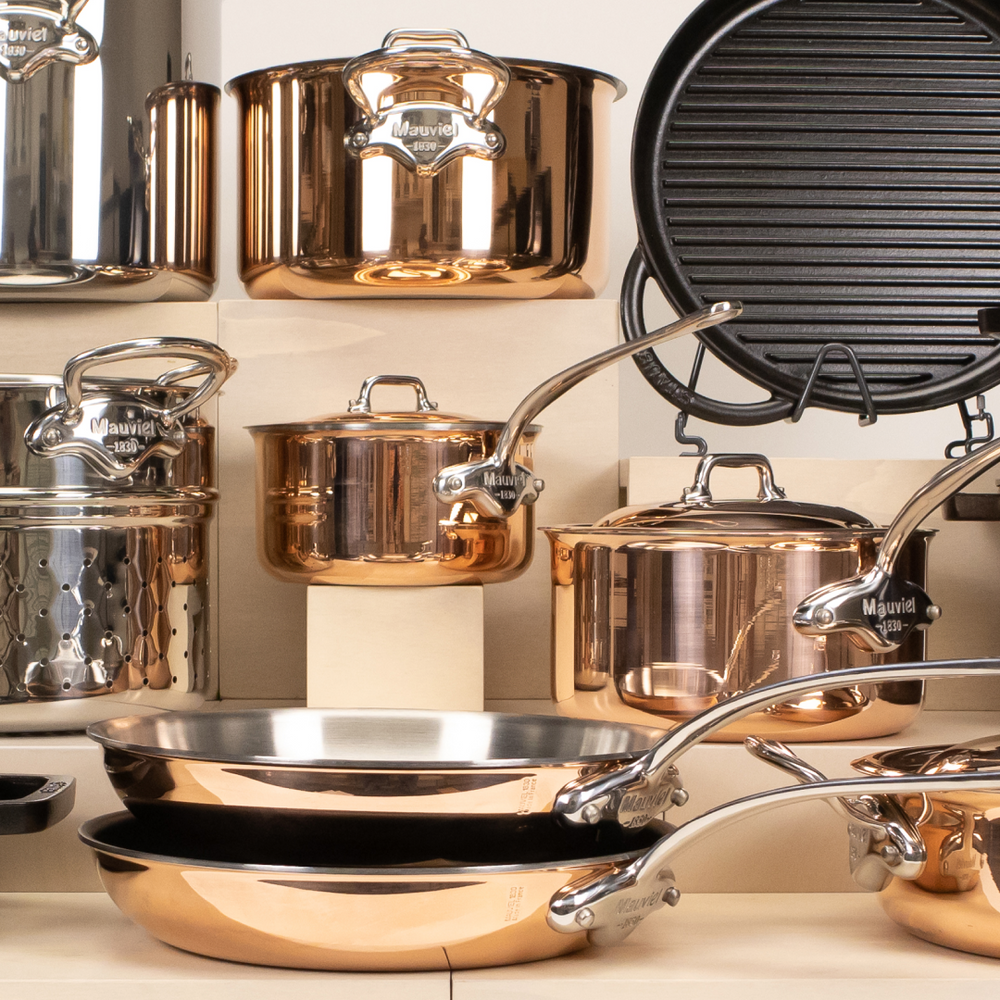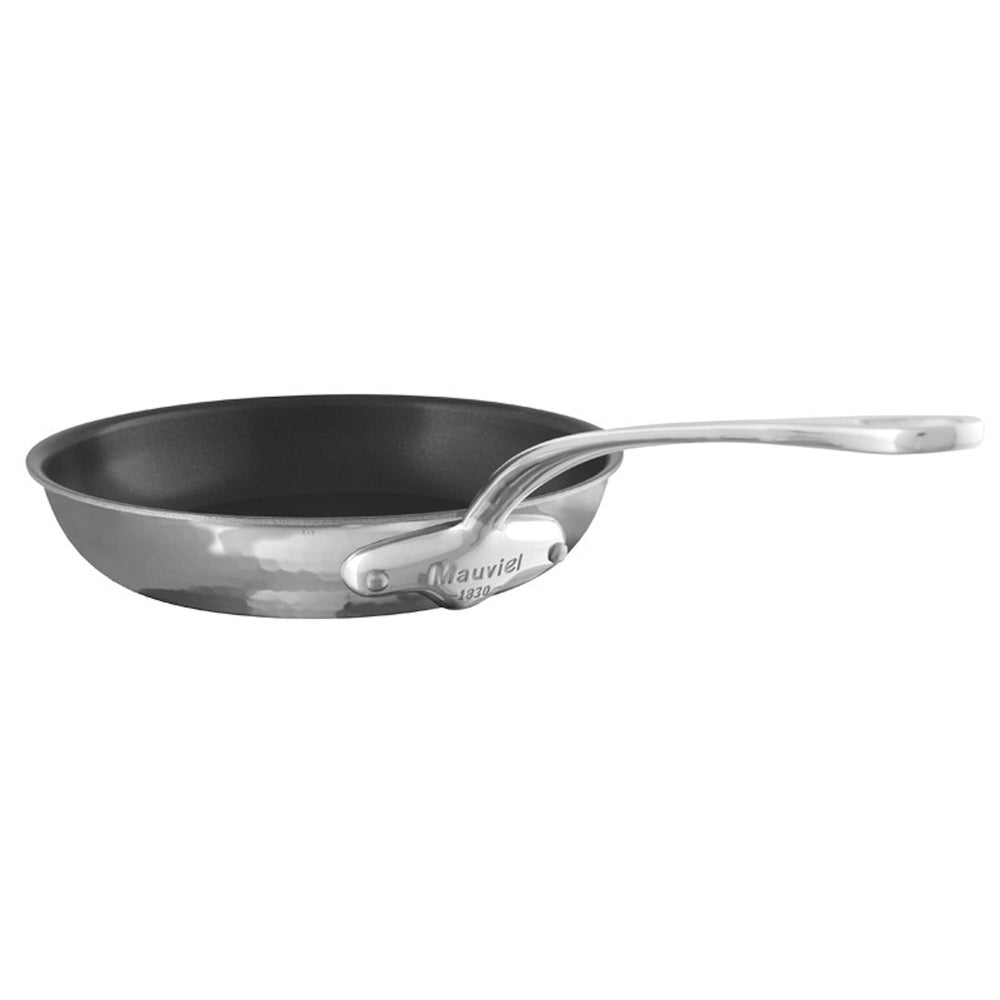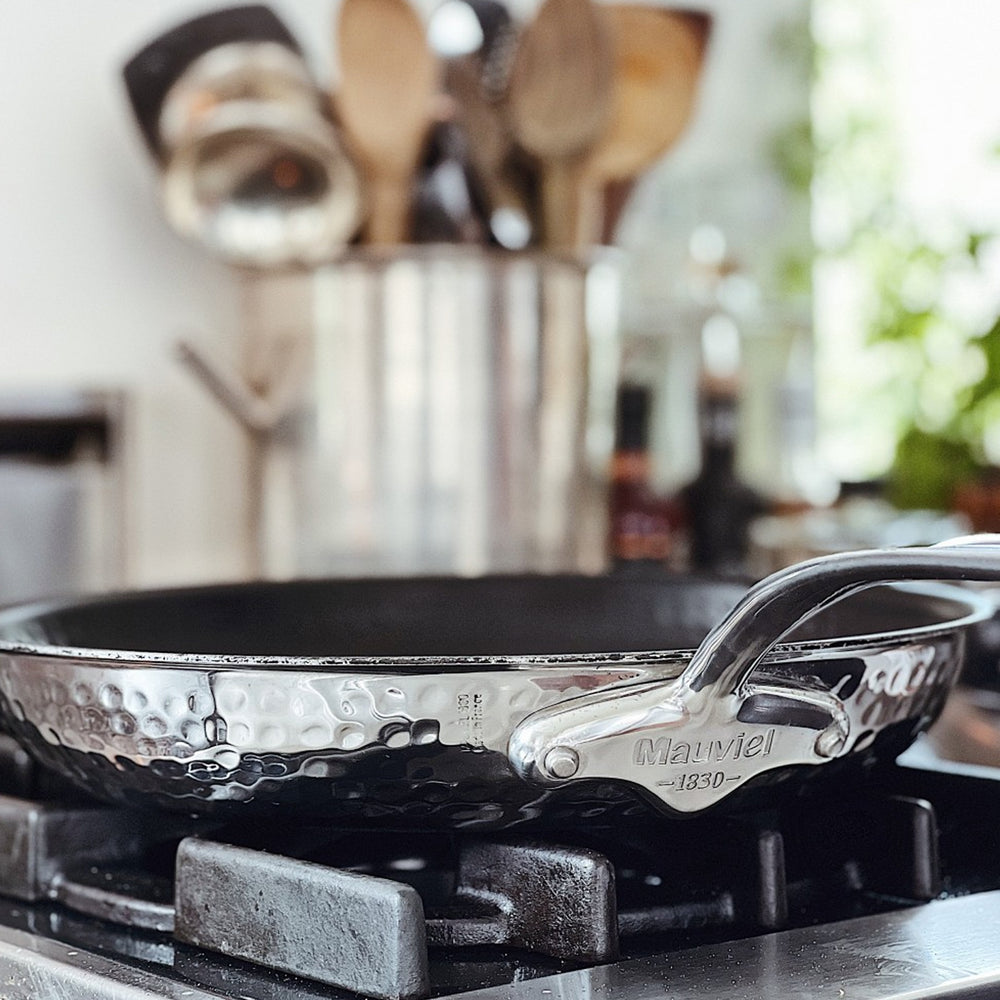Non-stick pans are designed to be free of fuss, but that comes with a small tax. Unlike their stainless steel counterparts that last for decades, these pans have an average shelf life of three to five years. The good news is that with proper care, you can extend the life of a non-stick pan well beyond its years—especially when the pans have good foundations.
Our favourites are from Mauviel’s M’Stone range and Gastrolux. By following these tips, which apply to all non-stick cookware, you can ensure your pan’s longevity. Once you get the hang of them, they’ll become a part of your natural instincts as a cook. Your food, which will be more carefully cooked as a result, will thank you.
Avoid overheating your pan, and never heat an empty pan.
No matter how high the quality, overheating or leaving a non-stick pan on the hob without anything inside it will put a lot of stress on the coating. Ensure there is always food or liquid—this includes a layer of oil or water—in the pan to absorb the heat. For most cooking, use the low or medium settings, and avoid cooking anything above medium-high heat. This is especially true of induction hobs, where you should never (ever) use the booster function. Since the pans we carry are designed to respond to heat very well, you will rarely need high heat anyway.
Know what thermal shock is.
Thermal shock is a sudden change in temperature from cold to hot or vice versa. This can affect the internal layers of your pan. Every non-stick pan we carry has at least three layers of heat-conducting metal that help distribute the heat properly. That means every part of the pan will respond to heat, not just the part above the ring of the hob. To keep your pan functioning powerfully, always remember to place your pan over low heat and gradually increase the temperature (nothing over medium-high heat). A reminder: Never use the boost function on an induction hob. Doing this will also help you rely less on recipe timings and more on your senses, since you are closely watching and smelling the food to check for doneness.
Be careful when using certain oils.
When using oils with low smoking points, like olive oil or butter, make sure you only cook at a low or, at most, medium heat. This is because burnt oil creates a sticky film that makes the pan hard to clean, reversing the effect of a non-stick coating. When paired with high heat, it can cause the coating to fray or peel. Definitely avoid cooking oil sprays, as they are often made with oils that burn at low heat, and their small particles cause hard-to-see buildup. High-burning oils, like vegetable, groundnut, or anything above 200°C in the list below, are less likely to burn onto the surface.
Here is a list of commonly used oils with their smoking points, from low to high. Every brand of oil varies, but this is a general benchmark of what you can expect.
- Extra Virgin Olive Oil: 164–190°C
- Coconut Oil: 175°C
- Butter: 175°C
- Duck, Chicken or Goose Fat: 190°C
- Vegetable Oil: 205-230°C
- Sunflower Oil: 225°C
- Rapeseed Oil: 230°C
- Peanut/Groundnut Oil: 230°C
- Light/Refined Olive Oil: 240°C
Use silicone or wooden utensils.
To avoid scratching the non-stick surface of your pan, use wooden or silicone utensils rather than metal ones.
Hand-washing is easy, and prolongs the life of your pan.
It takes more effort to put a non-stick pan in the dishwasher than it does to clean it, honestly. A bit of liquid detergent and a soft cleaner
(sponge, cloth,
natural fibre brushes) will do it quickly and thoroughly, while a dishwasher (and the detergents in particular) wear down the properties
of the non-stick coating. In summary, do not put your non-stick pan in the dishwasher.
Register for a warranty.
If you’d like to purchase a pan with us in-store, ask a member of our team to register you for a warranty on the non-stick coating of the pan you like. This is done automatically when you purchase the pan online. You’ll find the details of each pan’s warranty under its product description.

